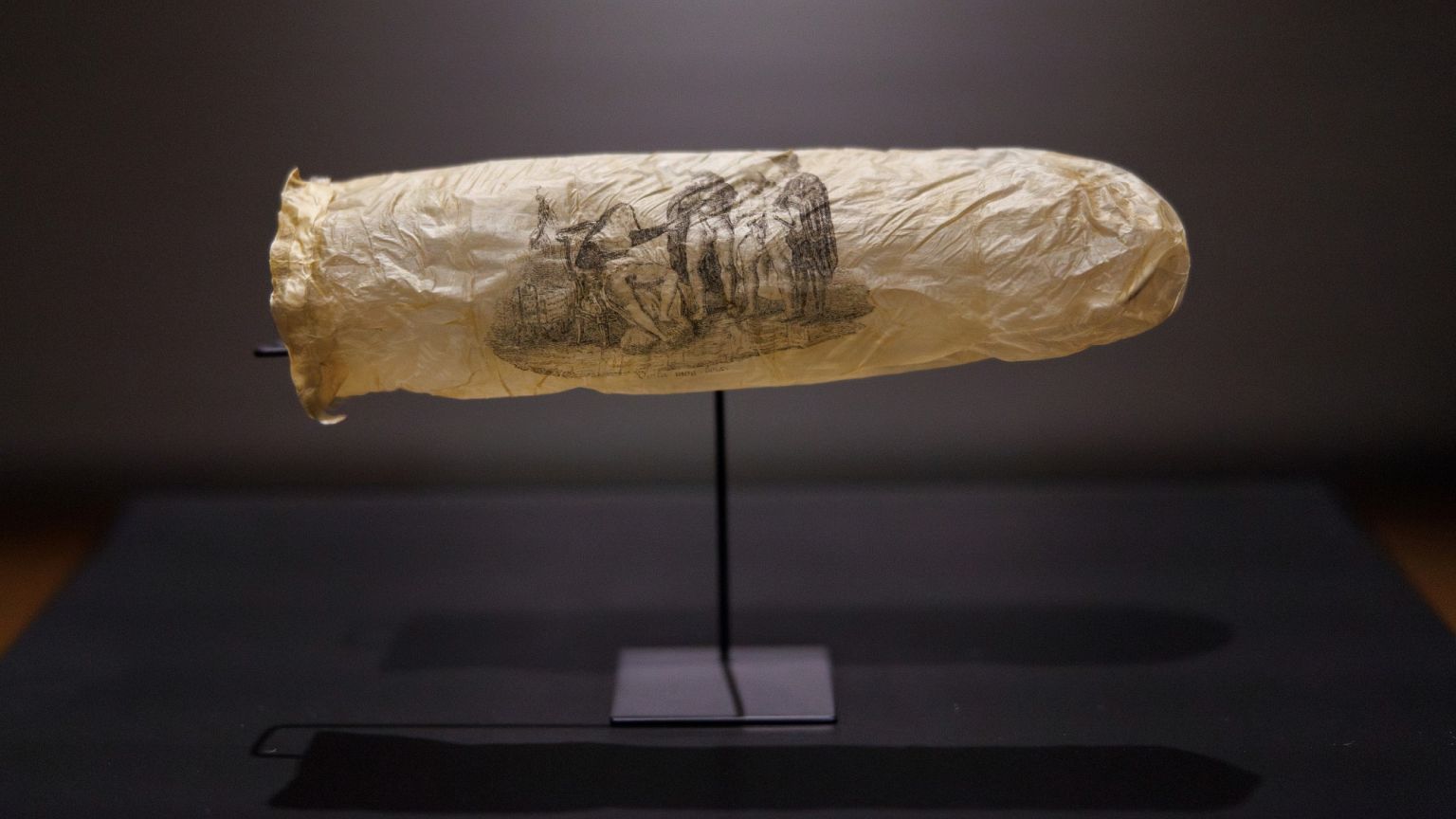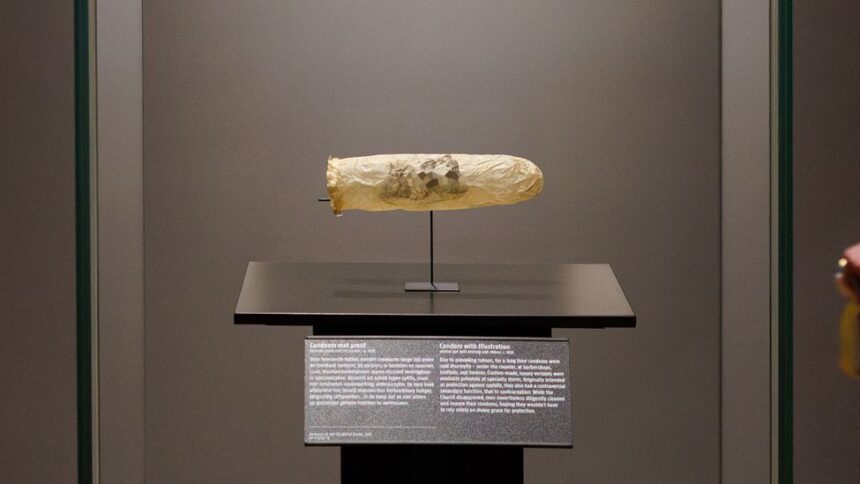Introduction
The Rijksmuseum in Amsterdam is currently showcasing a remarkable artifact—a condom dating back nearly 200 years. Remarkably preserved and in “mint condition,” 200-year-old condom this rare item offers a unique glimpse into 19th-century attitudes toward sexual health and contraception.
The Condom’s Origins and Material
Estimated to have been made around 1830, the condom is believed to be crafted from a sheep’s appendix. This natural material was commonly used in early forms of contraception before the advent of modern latex condoms. The history of condoms reflects the evolving human approach to sexual health and prevention 200-year-old condom.
Unique Artistic and Cultural Significance

One of the most striking features of this condom is the explicit print it bears, depicting a provocative scene of a nun and three clergymen. The print serves as a parody of celibacy and references the mythological Judgement of Paris, blending humor and social commentary from its era. The inscription “Voilà mon choix” (“There is my choice”) underscores the satirical nature of the print.
Exhibition Context and Public Reception
The condom is part of a broader exhibition focusing on 19th-century prostitution and sexuality, which includes prints, drawings, and photographs from that time. Since its display, it has attracted significant public interest, drawing crowds intrigued by this delicate piece of sexual health history. Curator Joyce Zelen notes that it is likely the only printed condom in any art museum collection worldwide.
Historical Context: Sexual Health in the 19th Century
During the 1800s, fears around unwanted pregnancies and sexually transmitted infections such as syphilis were prevalent. Condoms like this one embodied the tension between the pursuit of pleasure and the dangers perceived at the time. This artifact highlights both the lighter and darker sides of sexual health in an era before modern medical advances.

Preservation and Future Display Plans
Despite its age, the condom remains in remarkably good condition, verified through UV light inspection. Given its fragility, the Rijksmuseum is cautious about lending the item but is open to sharing it with other institutions. The exhibit will remain open until the end of November, offering visitors a rare opportunity to view this unique piece of history.
Conclusion
This 200-year-old condom is more than a curiosity; it is a window into the past, reflecting societal attitudes and medical realities of the 19th century. Its preservation and public display underscore the importance of understanding historical perspectives on sexual health and culture.
For more fascinating insights into historical health innovations, visit our article on History of Sexual Health Innovations.








